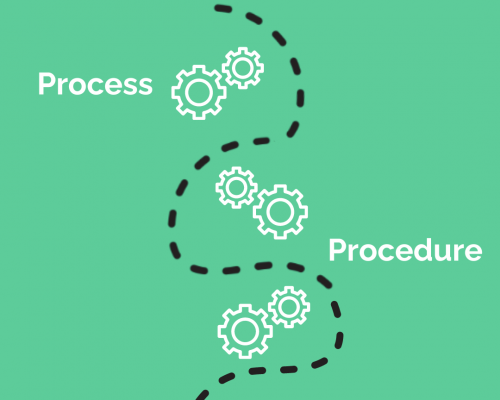Process and Procedure: The operational backbones of an organisation

Processes and procedures form the operational backbone of an organisation. These systems are not just supportive frameworks but are foundational to sustained performance and achievement.
“We already have processes and procedures in place”
“If we become too process-heavy, we will risk losing out-of-the-box thinking and innovation”
Processes guide leaders and their teams toward their organisation’s goals, providing clarity and direction. This clarity is essential—it means that every team member understands their role and how it contributes to the broader mission, ensuring coordinated efforts and efficiency. When processes are clear, leaders are better equipped to strategically allocate their resources and steer their teams towards successful outcomes.
The Kaizen model
To introduce improvements to your process and procedures you can look at the Kaizen model, which entails continuous, incremental change that leads to major improvements (Imai, 1986). It’s a philosophy that dovetails with the need for clear processes by encouraging a culture of constant scrutiny and refinement. In organisations where Kaizen is practised, employees at every level are engaged in a continuous dialogue on how to better their work environment and outputs. This engagement not only drives efficiency and quality but also fosters a sense of ownership and collaboration, which are key factors for a high-performing workplace.
Google’s ‘20% time’
Google’s ‘20% time’ exemplifies how structured flexibility as part of the process can act as a catalyst for innovation (Google, 2004). By allocating time for employees to explore and develop new ideas within their work schedule, Google has managed to create an innovative environment that balances routine tasks with creative freedom. This balance is critical; it allows for the exploration of new ideas while maintaining the stability of core processes. The resultant innovations not only contribute to Google’s success but also enhance employee satisfaction and engagement, which are vital for a high-performing workplace.
Total Quality Management (TQM)
Total Quality Management (TQM) takes the notion of process improvement a step further by embedding it into the company’s culture (Deming, 1986). TQM is a comprehensive approach that involves every team member in the pursuit of quality and efficiency.
Famously Toyota utilised TQM to enhance every stage of production, from assembly line to customer service, to ensure superior product quality and customer satisfaction (Liker, 2004). This collective approach to managing quality ensures that improvement is not just a top-down directive but a shared goal. As employees become more engaged with the processes that drive their work, they gain a greater sense of purpose and contribute more meaningfully to the organisation’s objectives. TQM, therefore, not only leads to better processes but also to a more motivated and productive workforce.
The correlation between effective processes and high-performing workplaces is clear. From the clarity that well-defined procedures offer, to the innovative spirit fostered by policies like Google’s ‘20% time’ and the shared goals of TQM, it’s clear processes and procedures should not be a one-time practice, they should be continuously worked upon and improved to foster engagement and performance.
Reference
Deming, W.E. (1986). Out of the Crisis. Massachusetts Institute of Technology, Center for Advanced Engineering Study.
Google. (2004). Google 2004 Founders’ Letter.
Imai, M. (1986). Kaizen: The Key to Japan’s Competitive Success. McGraw-Hill Education.
Liker, J.K. (2004). The Toyota Way: 14 Management Principles from the World’s Greatest Manufacturer. McGraw-Hill Education.
SHARE: